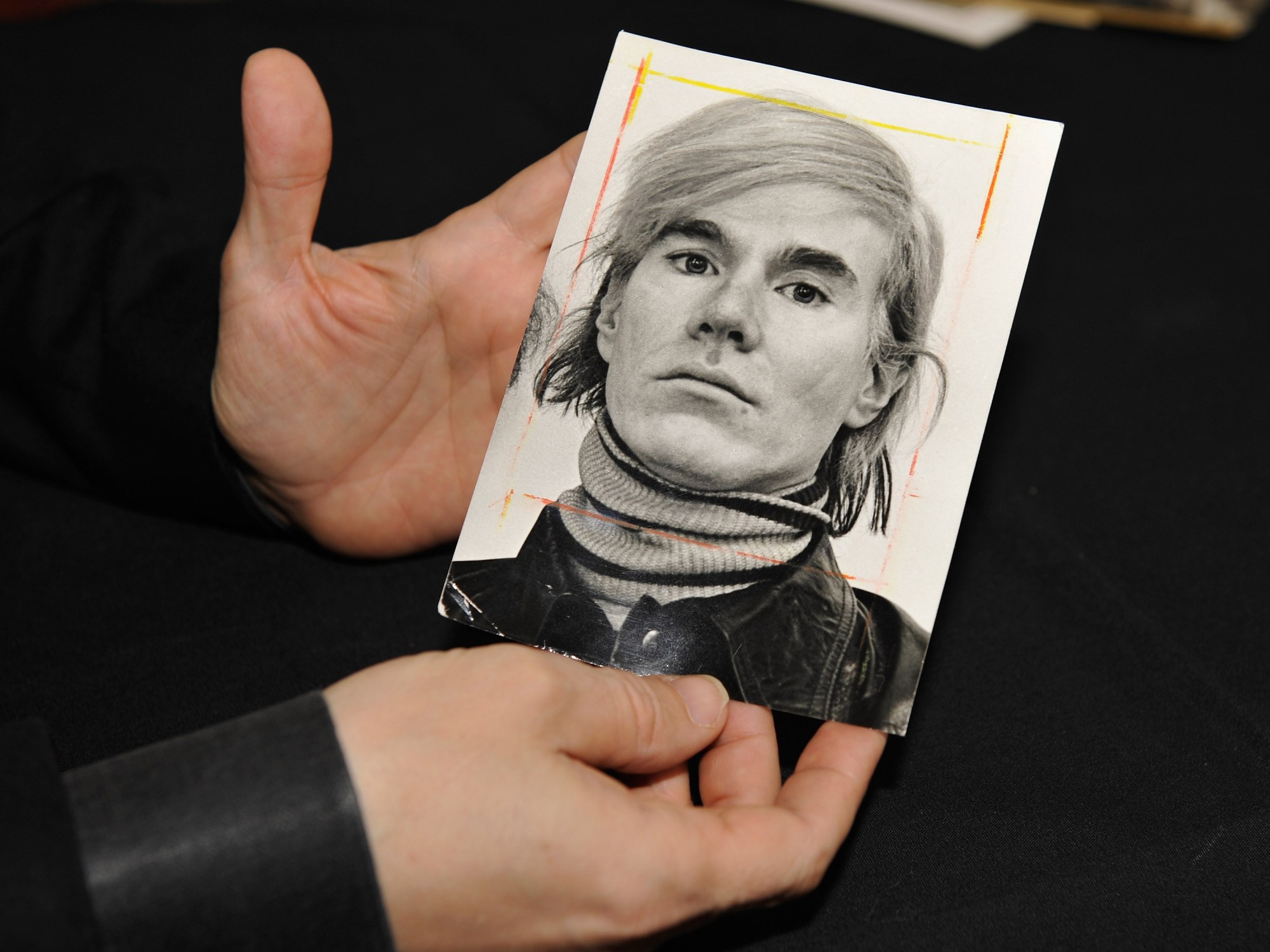
- Industry
Andy Warhol, Pop Art Master
Andy Warhol was born in 1928 in Pittsburgh to immigrant Slavic parents. As a child, he caught a nervous system disease called Sydenham’s Chorea, which may have been the cause of his skin blotchiness. The months of bed rest during this time led to the start of his drawing. After high school, he studied commercial art at what is now Carnegie Mellon University and graduated with a Bachelor of Fine Arts in Pictorial Design.
He moved to New York and began a successful career in advertising art and magazine illustration. In 1956, he was included in a group exhibition of “Recent Drawings USA” at the Museum of Modern Art. He also designed album covers for RCA. Time magazine featured Andy with his painting “Big Campbell’s Soup Can with Can Opener (Vegetable)” in 1962, which became the first of what may still be his most iconic artworks. His subjects were found on supermarket shelves, in comic strips, and in celebrity rags.
He became a defining figure of Pop Art with the classic “Marilyn,” “Elvis,” “Jackie (Kennedy)” and “Elizabeth Taylor” series. The use of bright colors, and silk-screening and tracing from slide projectors contributed to his signature style.
He was personally recognizable for his wild silver wigs. His studio, The Factory, became a hip hangout, and his self-designated superstars (including The Velvet Underground and Nico, Edie Sedgwick, Joe Dallesandro, and Candy Darling) were propelled into trendiness. Most importantly, his art was making money, which was very important to Warhol. He is quoted on Netflix’s The Andy Warhol Diaries as saying, “Making money is art, and working is art, and good business is the best art.”
People know a lot about Warhol’s art, but not much about his films. The earliest efforts consisted of a stationary camera focused on various subjects: Sleep is 5½ hours of a nude man sleeping; Empire is an 8-hour static view of the Empire State Building; Eat shows a man eating a mushroom for 45 minutes. Film Culture magazine awarded Warhol the Sixth Independent Film Award in their Summer 1964 issue for the above films, as well as for Haircut and Kiss. Warhol spent a couple of years on Screen Tests, filming whoever walked into The Factory, making them sit in front of the camera doing nothing. These films weren’t edited and there was virtually no attempt to control the quality of sound.
Warhol made hundreds of movies, but few were ever released. His most well-known movie is Chelsea Girls (1966) which used a split screen to project two movies, with the sound alternating between the two. It became an underground hit. Later movies that were more narrative-based — Flesh, Trash, Heat — were produced by him but directed by Paul Morrissey.
In 1968, Warhol was shot by Valerie Solanas, a radical feminist and fringe character in The Factory scene. He was near-fatally wounded and he suffered lingering effects (physical and psychological) for the rest of his life. A movie, I Shot Andy Warhol (1996) was made about the incident, and after that, Warhol stopped making films.
He founded Interview magazine with journalist John Wilcock in 1969. The 1970s brought Warhol more personal fame, hanging with the in-crowd at Max’s Kansas City and Studio 54. He painted his well-known Mao Zedong in 1973 and spent a lot of time and energy lining up rich celebrities to commission portraits (including Mick Jagger, John Lennon, and Diana Ross).
In the 1980s, Warhol collaborated with hot, younger artists like Jean-Michel Basquiat and Julian Schnabel which bolstered his critical acclaim and his financial success. He ventured into a surprising sideline of modeling for Zoli Models, becoming, in essence, his own brand. He appeared in, and produced, music videos and hosted Andy Warhol’s 15 minutes on MTV
Warhol died at age 58 on February 22, 1987, following gall bladder surgery.
His works include some of the most expensive paintings ever sold, and the value of his art has continued to increase. The recent May 2022 sale of Shot Sage Blue Marilyn (1964) for $195 million is the most expensive American work of art sold at auction.
A major pop culture icon of the 20th Century, he is credited with saying, “In the future, everyone will be world-famous for 15 minutes,” although it appears unlikely that those were his words.
Nonetheless, Warhol has well exceeded his 15 minutes of fame. 35 years after his death, he is instantly recognizable, as is his art. It’s hard to get any more famous than that.

